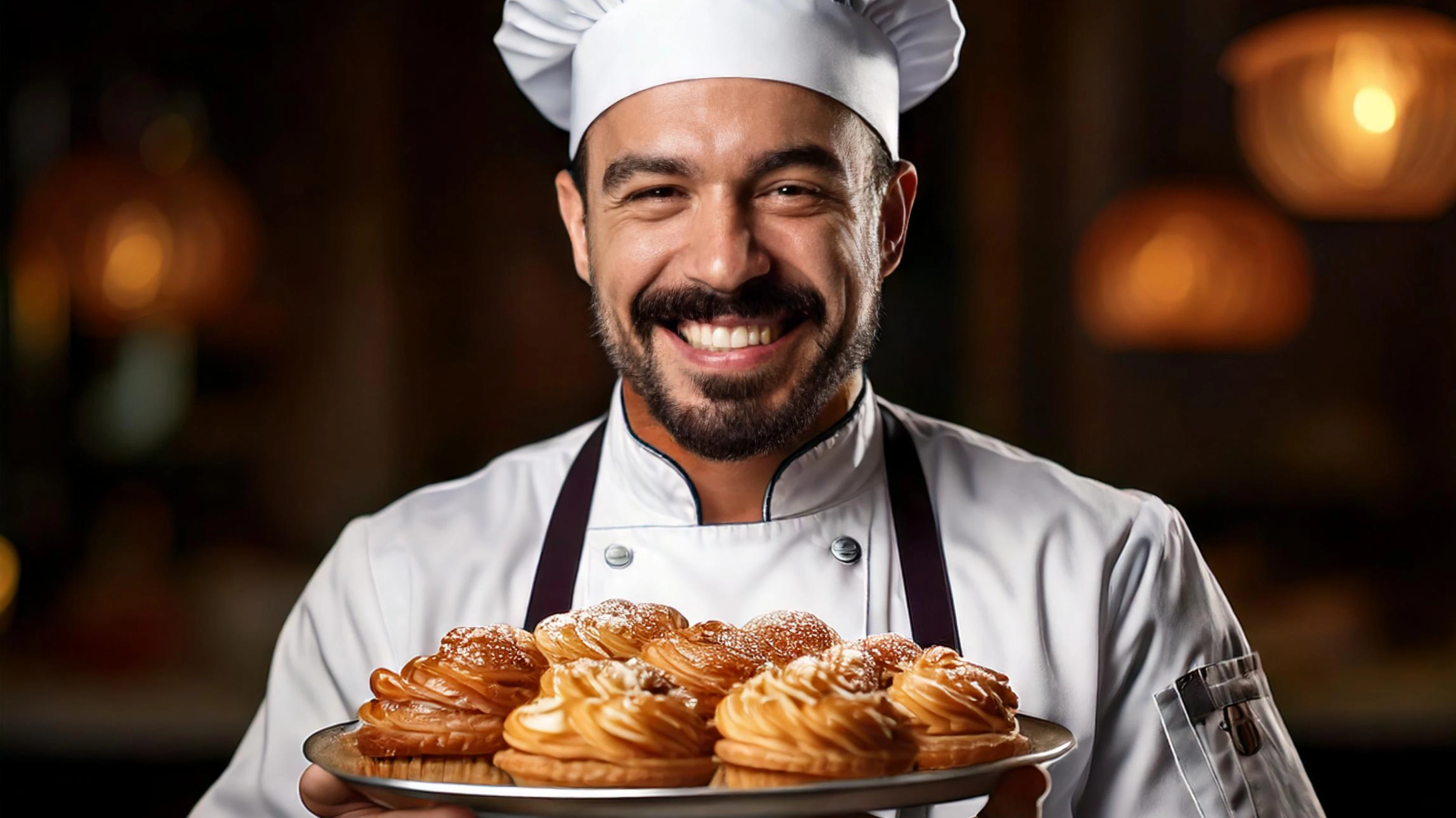Jump To Section
Making almond paste professionally involves precision and attention to detail to ensure a smooth and consistent texture. Almond paste is a key ingredient in many pastry recipes.

Making almond paste professionally involves precision and attention to detail to ensure a smooth and consistent texture. Almond paste is a key ingredient in many pastry recipes.





Almond paste is a versatile and essential ingredient in the world of pastry. It's a smooth, sweet mixture made primarily from ground almonds, sugar, and a small amount of liquid. This classic ingredient is used to enhance the flavor and texture of various baked goods, including marzipan, almond pastries, cakes, and confections.
The process of making almond paste typically involves grinding almonds into a fine texture, combining them with powdered sugar, and sometimes adding a touch of almond extract for an extra boost of flavor. The result is a pliable, almond-flavored paste that can be shaped, molded, or used as a filling in a variety of desserts.
Almond paste adds richness and a distinctive almond taste to recipes, making it a favorite among pastry chefs and home bakers alike. Its versatility makes it suitable for a wide range of creations, from traditional treats to more elaborate pastries. Whether you're making marzipan decorations, almond-filled pastries, or enhancing the flavor of cakes, almond paste is a go-to ingredient for achieving a delightful almond-infused experience.Jump to recipe.
Creating almond paste requires precision and attention to detail. Here are some tips to ensure your almond paste turns out perfectly:
Proper storage ensures the longevity and quality of your almond paste:
Ingredients:
Instructions:
Start by blanching the almonds to remove their skins. Bring a pot of water to a boil, add the almonds, and let them boil for about 1-2 minutes. Drain and rinse them under cold water. Pat the almonds dry with a clean kitchen towel or paper towels.
Place the blanched and dried almonds in a food processor. Pulse the almonds until they are finely ground. Be careful not to over-process, or you may end up with almond butter.
In a separate bowl, combine the powdered sugar, corn syrup, almond extract, salt, and water.
Transfer the ground almonds to the bowl with the sugar mixture.
Use a spatula or your hands to mix the ingredients until a crumbly mixture forms.
Dump the mixture onto a clean, smooth surface (such as a marble pastry board or countertop) lightly dusted with powdered sugar. Knead the mixture together until it forms a smooth and pliable almond paste. This may take a few minutes of kneading.
Shape the almond paste into a disc and wrap it tightly in plastic wrap. Let it rest in the refrigerator for at least a few hours or overnight. Resting allows the flavors to meld and the texture to become more uniform.
Your professionally made almond paste is ready to use in various recipes. Roll it out to cover cakes, shape it into decorative figures, or use it as a filling for pastries.
Store any leftover almond paste in an airtight container in the refrigerator for up to a month or in the freezer for longer storage.
This professional almond paste recipe should give you a high-quality product suitable for a wide range of pastry and confectionery applications. Remember that precision and care are essential when making almond paste to achieve the desired consistency and flavor.
Turn your pastry to success with PastryClass. Enroll new pastry skills, unleash your creativity, boost sales, enhance career opportunities, transition into an instructor role yourself, or simply discover a fresh passion. Learn with Cédric Grolet, Pierre Hermé, Ramon Moratò, Frank Haasnoot and more.

You have skills and you love what you do! What`s next?
Class Access